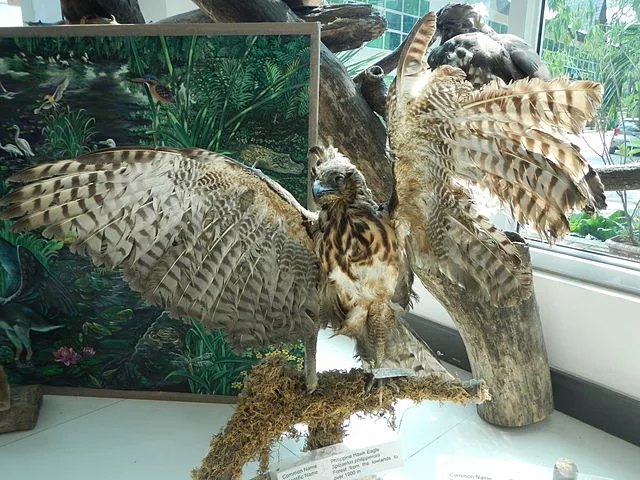
The Philippines is known for its rich biodiversity, with a vast array of unique flora and fauna that are found nowhere else in the world. Unfortunately, many of these species are threatened with extinction due to habitat loss, poaching, and other human activities. In this article, we will explore the wildlife of the Philippines and the efforts being made to conserve and protect these precious creatures.
One of the most iconic animals of the Philippines is the Philippine Eagle, also known as the monkey-eating eagle. This majestic bird is one of the largest eagles in the world, with a wingspan of up to 7 feet. It is also one of the rarest, with only around 400 pairs remaining in the wild. The Philippine Eagle is threatened by habitat loss, hunting, and trapping, and is listed as critically endangered on the IUCN Red List.
Another fascinating creature found in the Philippines is the tarsier, a small primate with large eyes that is known for its jumping ability. The Philippine tarsier is found only in the Philippines and is listed as vulnerable on the IUCN Red List due to habitat loss and fragmentation. Efforts are being made to protect the tarsier’s habitat and promote sustainable tourism that allows visitors to observe these creatures without disturbing them.
The Philippines is also home to a wide variety of reptiles, including the Philippine crocodile, the world’s rarest crocodile species. The Philippine crocodile is listed as critically endangered on the IUCN Red List, with only a few hundred individuals remaining in the wild. Habitat loss, hunting, and accidental drowning in fishing nets are the primary threats to this species.
The Philippine seas are also home to a diverse range of marine life, including over 2,400 species of fish, over 500 species of coral, and a variety of sea turtles, sharks, and rays. However, overfishing, destructive fishing practices, and pollution threaten the health and sustainability of these marine ecosystems. Efforts are being made to establish marine protected areas and promote sustainable fishing practices to conserve these precious resources.
Conservation efforts in the Philippines are being led by a number of organizations, including the Department of Environment and Natural Resources, the Biodiversity Management Bureau, and the Philippine Eagle Foundation. These organizations work to protect and conserve the country’s biodiversity through a range of activities, including habitat restoration, research, education, and community outreach.
In conclusion, the Philippines is home to a wealth of unique and fascinating wildlife that is found nowhere else in the world. However, many of these species are threatened with extinction due to human activities such as habitat loss, poaching, and pollution. It is essential that we continue to support conservation efforts and work to protect these precious creatures for future generations to enjoy.
Giovanni Carlo P. Bagayas is a seasoned travel guide and passionate explorer from the Philippines. With years of experience uncovering the hidden gems of his homeland, Giovanni has dedicated his career to showcasing the beauty, culture, and adventure that the Philippines has to offer. As the author of Best Philippines Travel Guide, he combines his expertise and love for travel to provide insightful tips, detailed itineraries, and captivating stories for travelers seeking unforgettable experiences in the Philippines. Giovanni’s mission is to inspire wanderlust and help visitors discover the true essence of his vibrant country.

